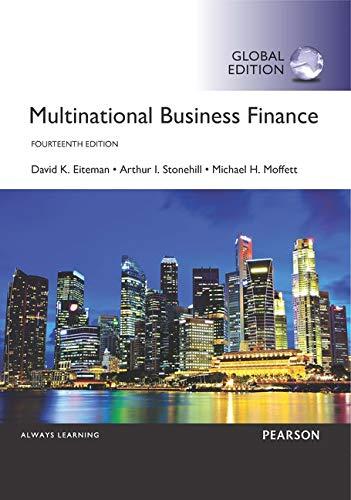Question
Assume that research and development is a production activity that is intensive in skilled labor and that assembly is a production activity that is intensive
Assume that research and development is a production activity that is intensive in skilled labor and that assembly is a production activity that is intensive in unskilled labor.If a country is relatively abundant in skilled labor, then which production activity is likely to be offshored?
A.Assembly
B.Neither are likely to be offshored
C.Both are likely to be offshored
D.Research and Development
If the country described in the previous questiondoes begin to offshore some of its production processes, what should we expect to happen to the wage for skilled workers relative to unskilled workers and the composition of the country's labor force?
A.The wage paid to skilled workers relative to unskilled workers will decrease, while the number of skilled workers relative to unskilled workers will decrease.
B.The wage paid to skilled workers relative to unskilled workers will decrease, while the number of skilled workers relative to unskilled workers will increase.
C.The wage paid to skilled workers relative to unskilled workers will increase, while the number of skilled workers relative to unskilled workers will decrease.
D.The wage paid to skilled workers relative to unskilled workers will increase, while the number of skilled workers relative to unskilled workers will increase.
Assume that two identical (same population, production technologies, consumer preferences, etc.) countries open up to trade with each other.Which of the following variables will change in the short-run?
A.The number of varieties sold in each country
B.The population in each country
C.The number of firms producing in each country
D.The total size of the market divided by the number of varieties sold
If identical two countries open up to trade with each other in a market in which there is monopolistic competition, what happens during the transition between the short-run equilibrium with trade and thelong-run equilibrium with trade?
A.The number of firms in each country will rise, the demand curves for each variety will become more elastic, and the price of the goods sold will rise.
B.The number of firms in each country will fall, the demand curves for each variety will become less elastic, and the price of the goods sold will fall.
C.The number of firms in each country will fall, the demand curves for each variety will become less elastic, and the price of the goods sold will rise.
D.The number of firms in each country will rise, the demand curves for each variety will become more elastic, and the price of the goods sold will fall.
most international trade has taken place between relatively rich developed countries.Given what we have talked about previous with respect to the Heckscher-Ohlin model and the other classical models of international trade, this is perhaps a somewhat surprising result.
According to the Heskscher-Ohlin model of trade, what is the primary determinant of a country's comparative advantage in trade?
Given your answer to the previous question,
Are the bigger differences in comparative advantages likely to be between countries at similar levels of economic development or countries at different levels of economic development?(expected answers: "similar" or "different")
The answers to the questions above show that there may be something missing in the classical models of international trade.This missing element was imperfect competition and increasing returns to scale.
Describe some of the key features of a market characterized by monopolistic competition.In particular, discuss costs and varieties of products sold.
If more firms enter a market characterized by monopolistic competition, what will happen to the market share of each firm and the elasticity of the firm-specific demand curve?(expected answers: "increase" or decrease")
Assume, as we did in class, that a country opens up to trade with another country that is exactly identical to it.Describe what happens to the firm-specific demand curves as a result of this action.
When the change in the firm-specific demand curve from the previous question occurs, the price charged by firms in the integrated market will___________.(Expectedanswers:"increase","decrease",or"not change")
If all firms attempt to undertake the strategy outlined in your answer to the question above, what will happen to the firm-specific demand curves?
Given your answer to the question above,the economic profits of firms in the trading equilibrium in the short-run will_________.(Expectedanswers:"increase", "decrease", or "stay the same")
Given your answer to the previous question,the number of firms in the integrated market in the long-run relative to the short-run will ________.(Expectedanswers:"increase","decrease",or"stay the same")
Name at least three differences between the long-run autarky equilibrium and the long-run trade equilibrium in the monopolistic competition model.
Step by Step Solution
There are 3 Steps involved in it
Step: 1

Get Instant Access to Expert-Tailored Solutions
See step-by-step solutions with expert insights and AI powered tools for academic success
Step: 2

Step: 3

Ace Your Homework with AI
Get the answers you need in no time with our AI-driven, step-by-step assistance
Get Started


